This week, the Marvel Rundown exegetes Daredevil #1 with the new creative team of Saladin Ahmed and Aaron Kuder taking over the Man Without Fear. This review is SPOILER-LITE, so scroll down for the Rapid Rundown for some Spoiler-Free reviews of Darth Vader, Incredible Hulk, and Spine-Tingling Spider-Man.
What did you think of this week’s latest Marvel Comics issues, True Believers? The Beat wants to hear from you! Give us a shout-out, here in the comment section or over on social media @comicsbeat, and let us know what you’re thinking.
 Daredevil #1
Daredevil #1
Writer: Saladin Ahmed
Artists: Aaron Kuder
Color Artist: Jesus Aburtov
Letterer: Clayton Cowles
Cover Artist: John Romita, Jr.
Taking over Marvel’s Daredevil must be an intimidating proposition. On the one hand, creators are afforded a level of freedom unheard of in any other superhero book. On the other hand, it has had an almost unparalleled history of all-star creators that any newcomer would feel pressured to live up to. Writer Saladin Ahmed has taken the challenge, alongside artist Aaron Kuder, colorist Jesus Aburtov, and letterer Clayton Cowles. They pick up immediately where Chip Zdarsky and Marco Checchetto left the character–recently returned from a brief stay in hell, without his memories, and apparently a Catholic priest.
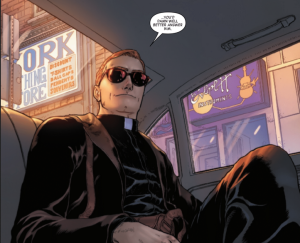
It was a fitting end-point for Zdarsky’s run, which used big silly comic book ideas and iconography to magnify Matt’s inner turmoil. Having Matt end up as a priest, with his vigilante life not even so much as a memory, was the only way for Matt to escape Daredevil’s cycle of violence. But Matt Murdock can never be a priest. His compulsion to proffer physical and temporal justice is too at odds with a priestly call to forgiveness and salvation. He would crumble under the mental discord, and Ahmed gives us that. Even without his memory, Matt Murdock cannot fight his base nature. That is not a surprise, but what is surprising is how quickly Ahmed abandons the amnesiac status quo. The questions at the start of the issue about what makes Matt Murdock Matt Murdock are abandoned. Instead, Ahmed wonders if a man who dresses like a devil can also be a man of God.
For me, it’s a less interesting question because it is so similar not only to what Zdarsky just did, but to decades of storytelling on page and screen. The idea that there is something twisted inside Matt Murdock that cannot be put right, even with a blank slate, is more compelling than another story where he desperately seeks forgiveness. I was more drawn to the images of Father Matthew leaping into violence, disgusted with himself but unable to deny the thrill, than I was of his triumphant return to superheroics.
Aaron Kuder’s art and storytelling are technically proficient, but his rubbery and rounded characters sit somewhere between caricature and realism and are mismatched with Ahmed’s hardboiled narration. In quiet, character-focused conversation scenes he is at his weakest. But the pages come alive–like Matt himself–when the devil is let out. Kuder makes the brutality of Daredevil’s combat beautiful. There’s a two-page spread of Father Matthew overcome by his violent urges that is choreographed like a dance across the page.
The rest of the contributors are solid. Jesus Aburtov’s colors are moody and muted, with a particular pop of blood-red running throughout as a visual motif. Clayton Cowles’ assured work on the letters was especially notable in the splash pages. He follows the subtle movements of Kuder’s figures up and down and back around the page so that the captions are self-evidently read in order. Those kinds of layouts can be tricky for less experienced craftspeople.
Overall, it’s a fine issue of superhero comics but fails to say anything that hasn’t been said well and often. We get some mysteries and cool supernatural visuals that hint at Matt’s resurrection being a bit less miraculous than it seems but not enough to make it stand out. Hopefully, Ahmed and Kuder build up something fresher and more complex from this first issue, which is a safe but competent foundation.
VERDICT: BROWSE
- Alligator Loki #1
- Written by Alyssa Wong, with art by Bob Quinn and Pete Pantazis, Alligator Loki was first released on Marvel Unlimited as an Infinity Comic in the scrolling format. Several of these comics have been released as floppies by now — It’s Jeff and Hulkling & Wiccan — with varying degrees of success with adapting the format to print. Even though the creative team knocked it out of the Everglades, many of Alligator Loki’s jokes worked better in the scrolling format. That being said, I still found myself laughing out loud at the adorable alligator’s antics, especially when his buddies Doreen Green/Squirrel Girl and Aaron Fischer/Captain America were on the scene. For fans of the character or adorable sidekick stories in general, this is a must buy (even if it is better on the MU app). —ROK
- Star Wars: Darth Vader #38
- For a while now Marvel has been filling in the gap between The Empire Strikes Back and Return of the Jedi, with writer Greg Pak giving us further insight into our favorite Sith Lord with minimal dialogue and maximum carnage. Part of the current Star Wars: Dark Droids event, this issue picks up as Vader’s quest to fully control his connection with the force is interrupted by the ongoing droid rebellion aboard the SSD Executor. Ordered to retake the ship, Vader must battle his way through an army of droids to activate the ship’s droid killswitch. To add to his mission, there is an unknown threat to Vader as the Imperial Fleet is ordered to scuttle the Executor by Palpatine’s Grand Vizier Mas Amedda. Artist Raffaele Ienco and colorist Federico Blee bring a visceral depth to the nonstop action of the droid chaos and the Imperial officers’ mistaken faith in loyalty. With Jedi on the horizon and the ultimate fate of Darth Vader closing, this series is closing out Vader’s legacy strong. – GC3
- Incredible Hulk #4
- I’ve been really enjoying the beginning of this newest Hulk series, and this issue continues in that positive direction. Phillip Kennedy Johnson is leaning back into the classic horror that used to define the Hulk, and rather than copy the success of the Immortal story that came before, he’s moving in a different direction. There’s a strong focus on freakish monsters and the ghosts of the past, all while sticking to the man-on-the-run mentality that’s been so successful for Banner’s story over the years. Travel Foreman fills in on pencils, and perfectly captures the grotesqueness that’s come to define the Hulk as of late. There are definite shades of Swamp Thing in this particular issue, and a giant-sized Man Thing appearance to boot, but this works well for the Hulk. Matthew Wilson’s colors and Cory Petit’s letters round out the book, maintaining the unsettling tone that’s been established to resounding success. – CB
- Spine-Tingling Spider-Man #0
- This book is a collection of the Spine-Tingling Spider-Man comics that first appeared online through Marvel Unlimited, coming to us now in print for the first time. It clocks in at a mighty 90 pages, and carries a price tag of $9.99. It also delivers something excellent — a whole lot of Juan Ferreyra Spider-Man art. Ferreyra has long been one of the best and most interesting artists in superhero comics. And while this book doesn’t lend itself to the massive two-page spreads that tend to mark his stellar work, the energy he brings to Spider-Man is worth the price of admission itself. On top of that, Saladin Ahmed pens a troubling, horror-take on Peter Parker that is perfect for the spooky season (which with Labor Day behind us, is now officially underway). The page layouts feel a little sparse at times, but that’s to be expected from artwork originally made for a format in which you scroll. All told, I think this is a fun standalone book. -ZQ
Next week, a new run for Captain America begins!


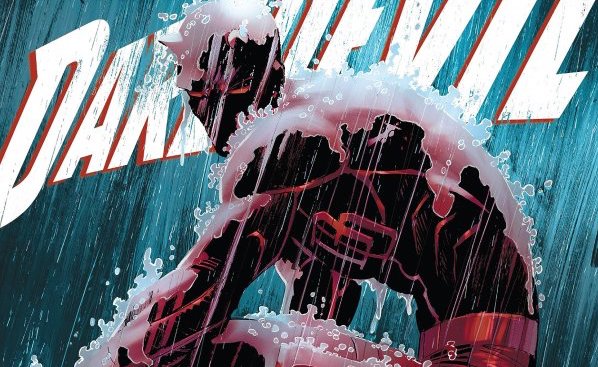
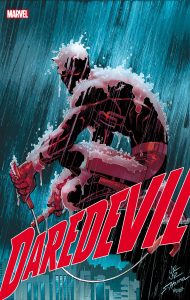
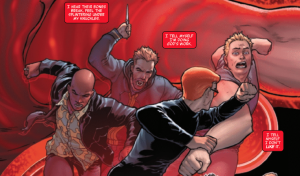
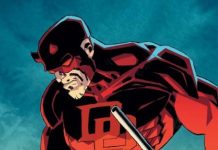
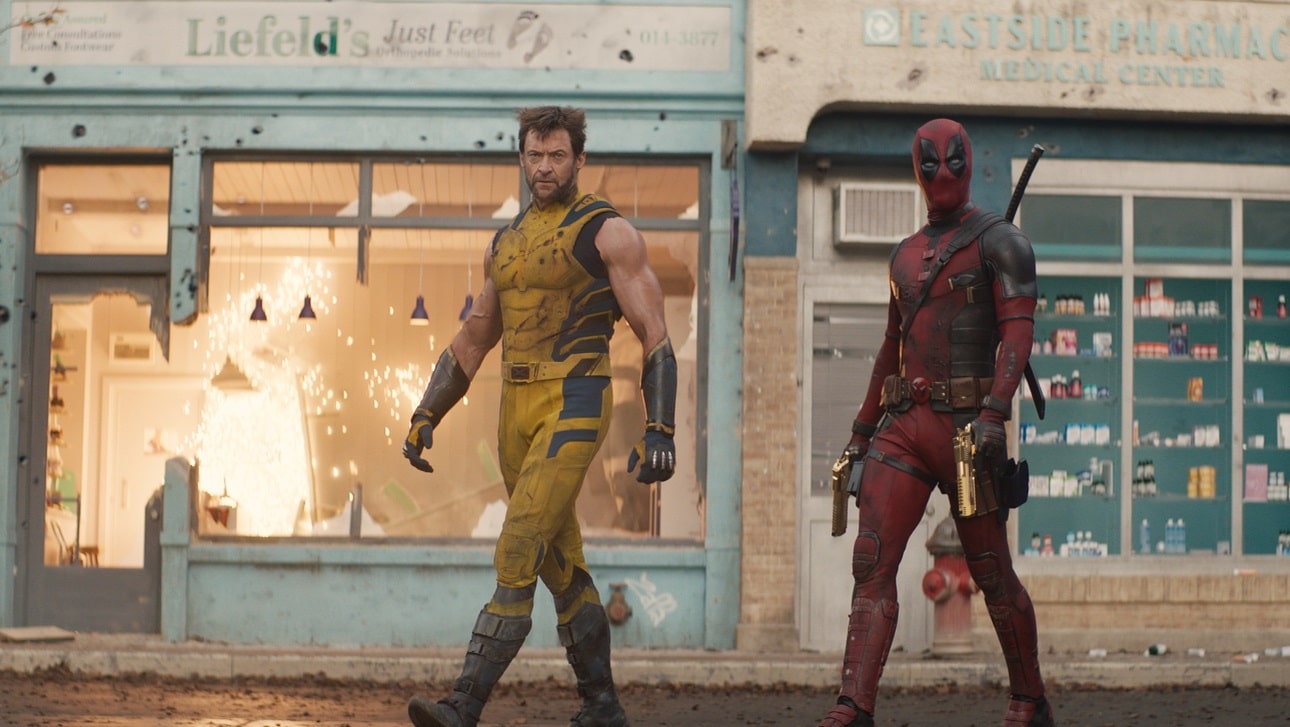



I love the graphic work by Jesus Aburtov. Moody, bitter-sweet, but appealing!
Comments are closed.